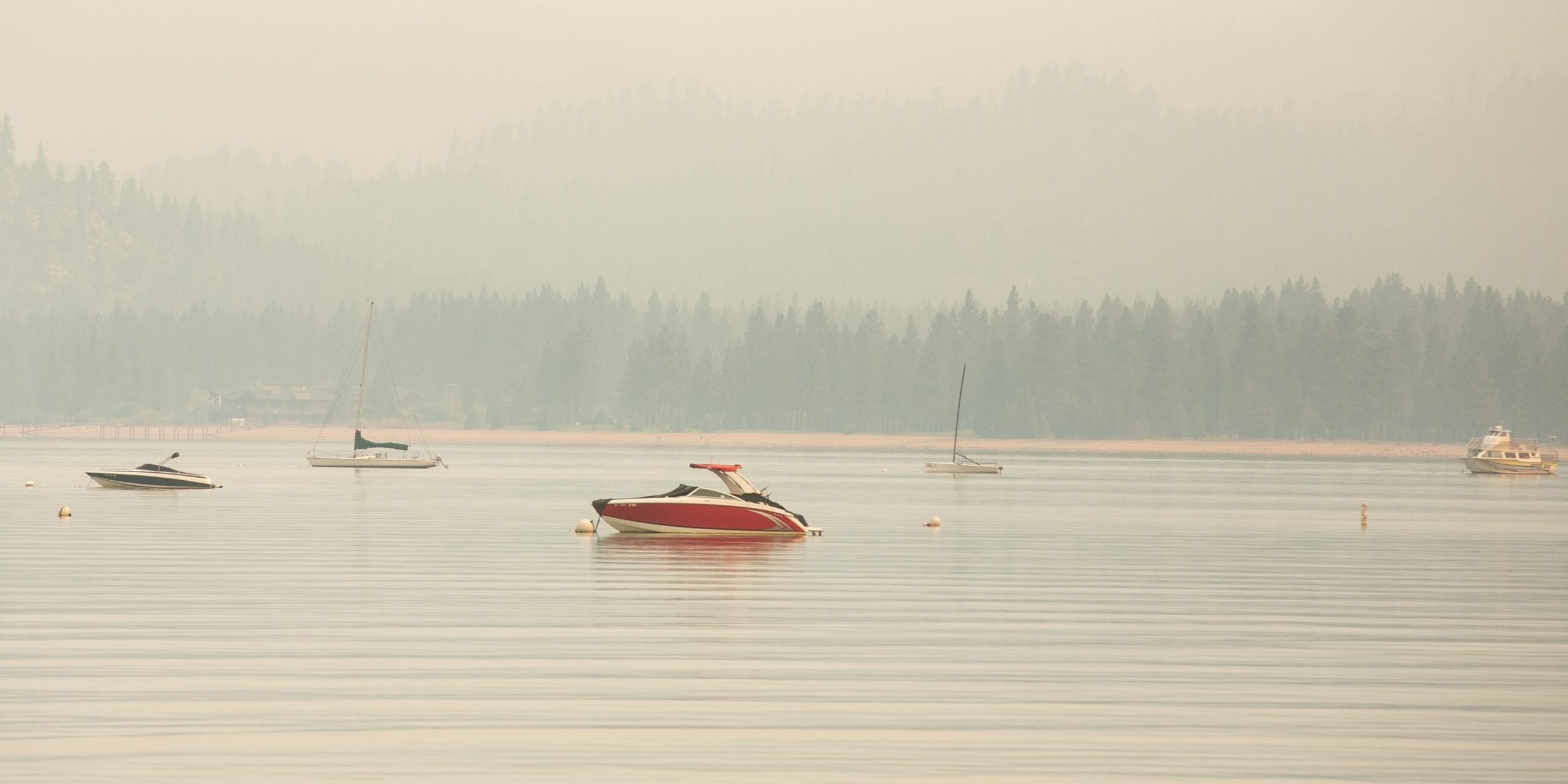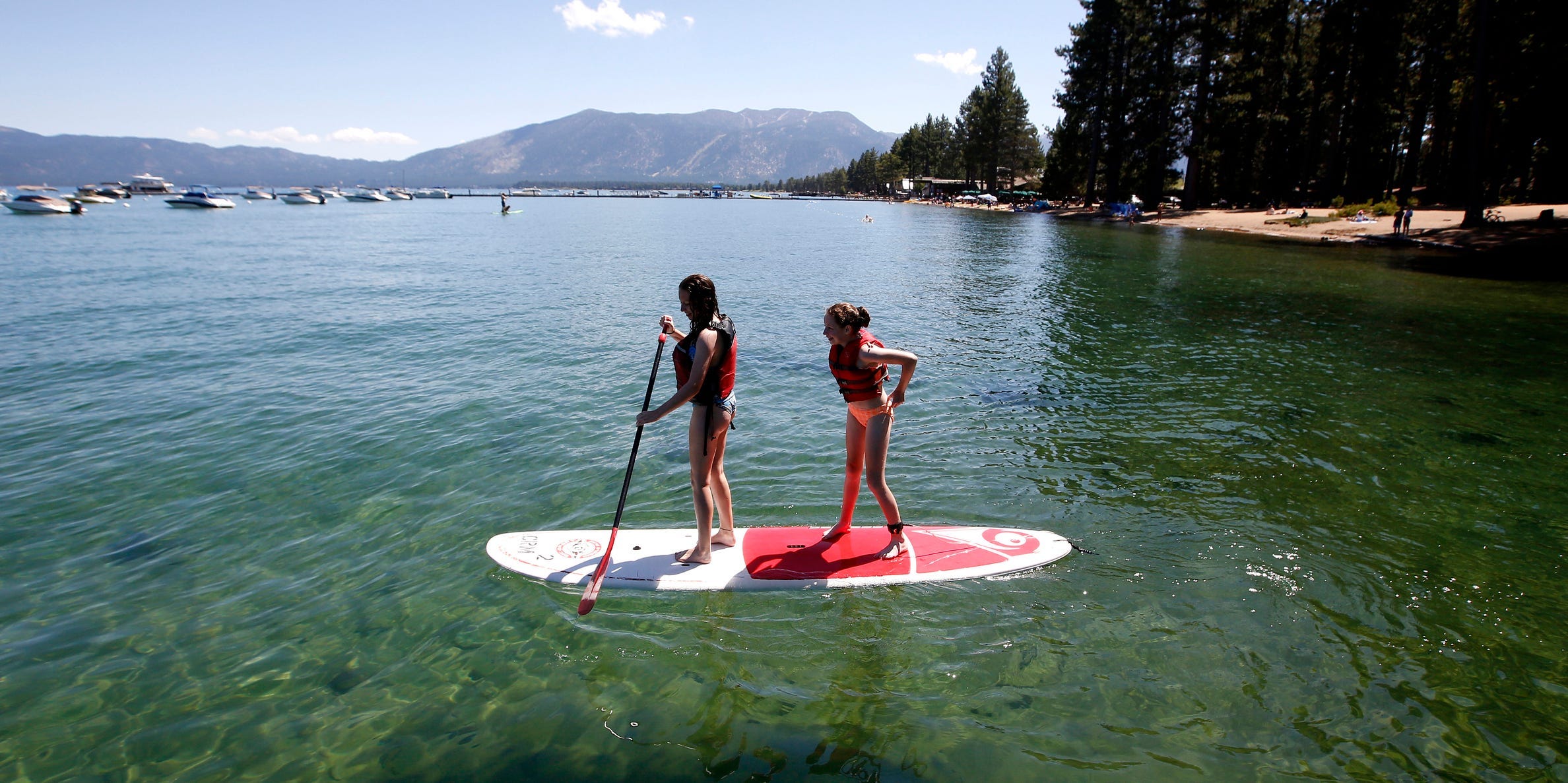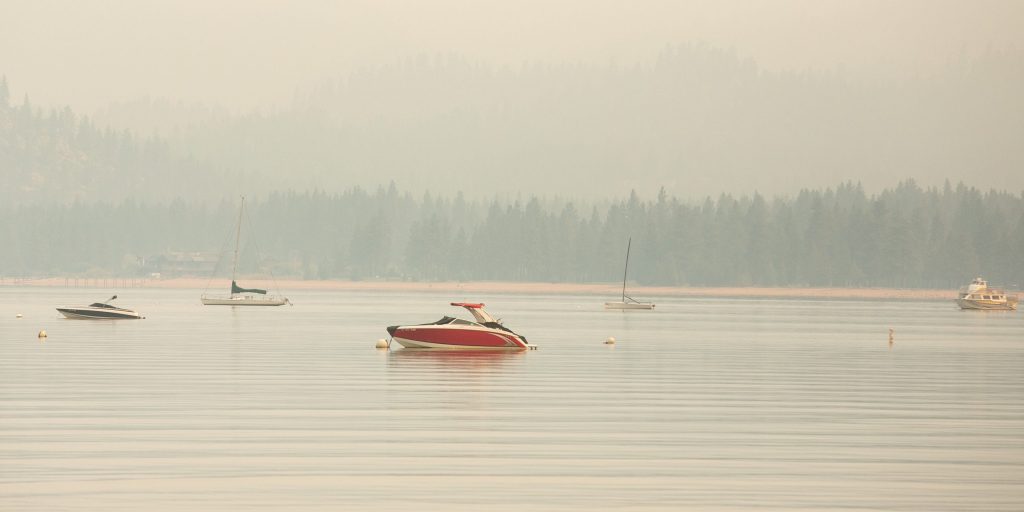
Jason Armond / Los Angeles Times via Getty Images
- The Caldor Fire has prompted tens of thousands of evacuations and destroyed multiple structures.
- But the inferno also poses a long-term threat to the waters of Lake Tahoe, researchers said.
- Debris and sediment will likely wash into the lake in the coming months.
- Visit Insider's homepage for more stories.
Increasingly dismal conditions in the forested area surrounding the Caldor Fire in Northern California have already begun to tarnish the famously blue, alpine waters of Lake Tahoe – and researchers say the long-term effects on the natural wonder are still unknown.
The wildfire prompted a series of evacuation orders and warnings in the region this week as the flames spread rapidly through the region. As of Monday, the blaze had grown to more than 177,000 acres and forced more than 22,000 residents to flee.
The massive fire has already injured at least five people and destroyed more than 650 structures since it began on August 14, Cal Fire said. At least forty homes have been damaged.
But the inferno also poses a serious risk to the area's world-renowned scenery, including Lake Tahoe's crystal clear waters that have been clouded by Caldor's smoke and ash. Soot in the air has dimmed the sunlight and a thick layer now coats the surface of the lake, which can affect the water's ecosystem
The impacts could be long-lasting as debris and sediment will likely wash into the lake from runoff rain in the coming months.
"It's not going to turn the lake green or anything like that, in my opinion. But certainly the clarity of the lake, how deep you can see in the lake, could be affected for several years," Randy Dahlgren, emeritus professor of soils and biogeochemistry at the University of California, Davis told Cal Matters. "It all depends on Mother Nature."
The popular vacation spot draws year-round tourists and is one of the largest lakes in the country at more than 1,600 feet deep.

AP Photo/Rich Pedroncelli, File
"You can see almost 100 feet below the surface. It is one of the deepest lakes in the world," Sudeep Chandra, a biology professor and director of the Global Water Center at the University of Nevada, Reno told The Arizona Republic. "From a cultural viewpoint, it is important for the native peoples. The Washoe Tribe lived in the basin. And now it is important for recreation and the local economy."
But the fire conditions have already begun to impact the clarity of the water. The University of California, Davis' Tahoe Environmental Research Center's tests of the lake in recent days show a decline in visibility, according to Cal Matters. Geoffrey Schladow, director of the center, told the outlet visibility at this time of the year is usually 65 feet, but right now, experts can only see down about 50 feet.
The changes could be due to smoke blocking the sunlight, ash clouding the waters, and an increase of algae growing near the lake's surface, Cal Matters reported.
The Caldor Fire spread into the Lake Tahoe basin on Monday, just hours after the entire city of South Lake Tahoe was forced to evacuate ahead of the flames.
Firefighters said Tuesday the fire will likely take another two weeks to contain.
